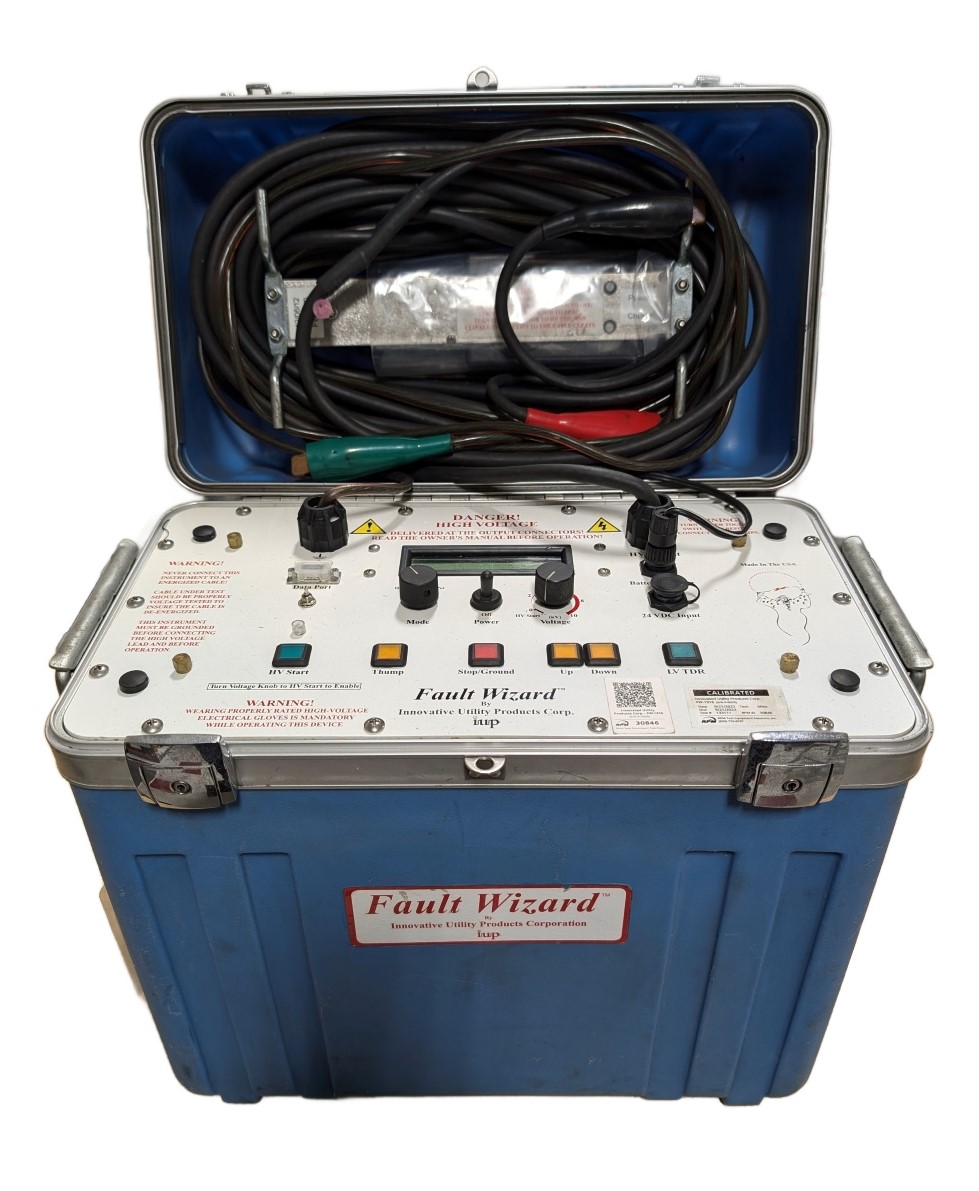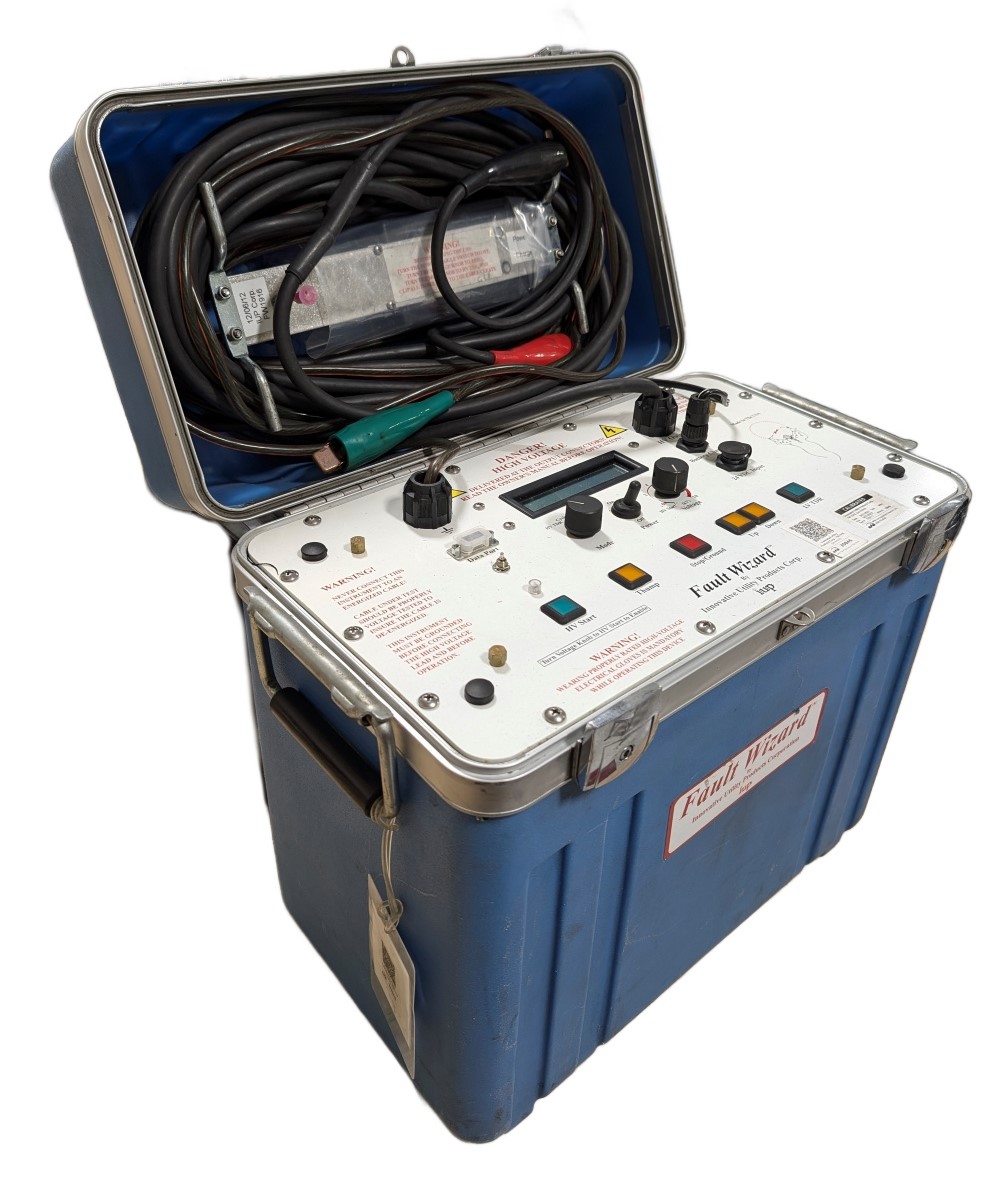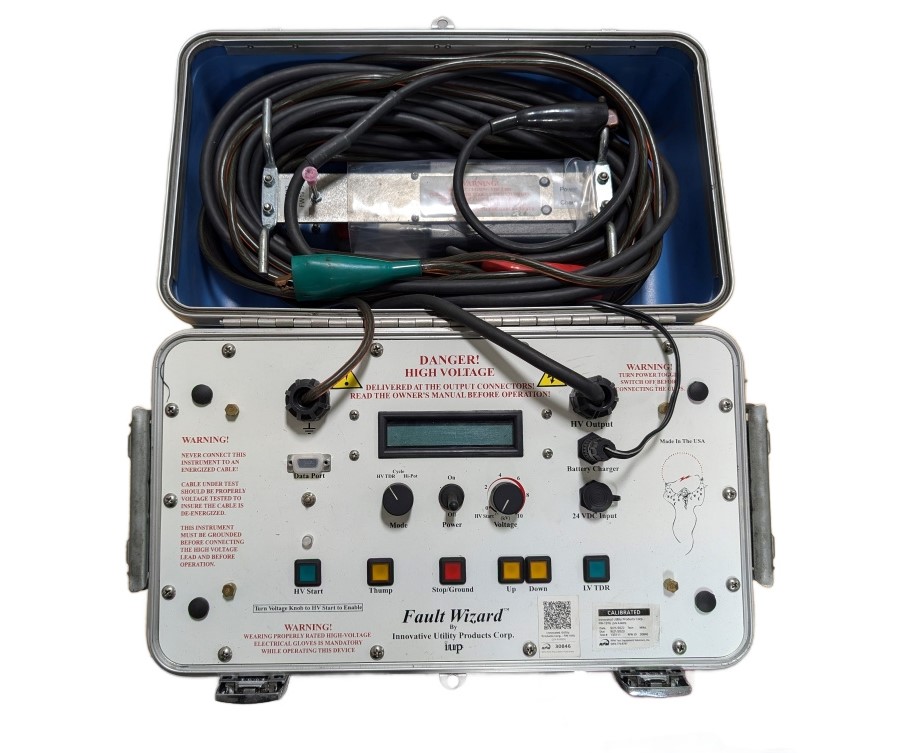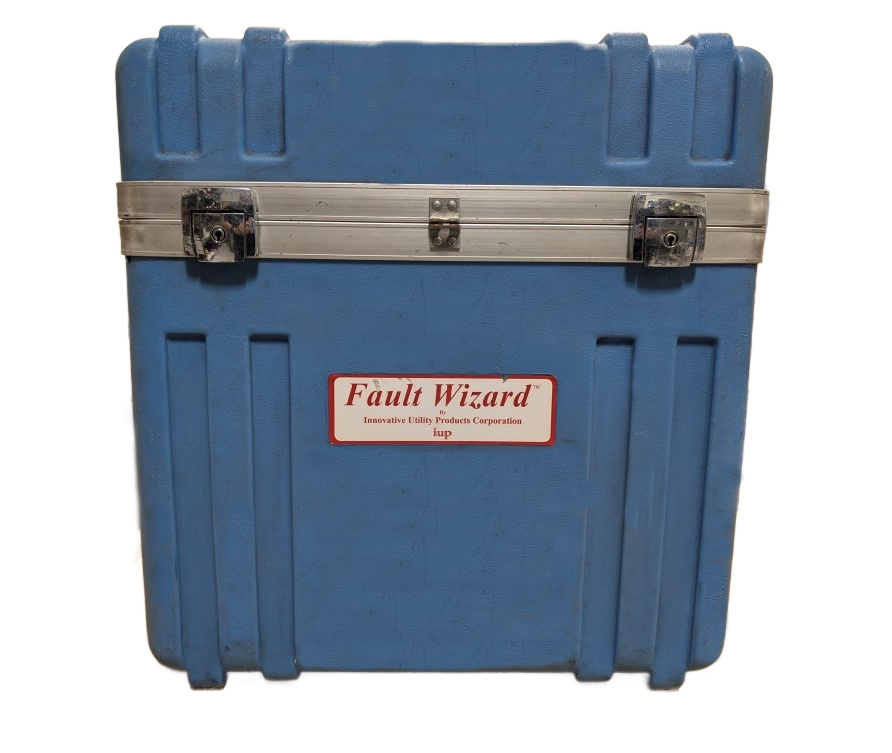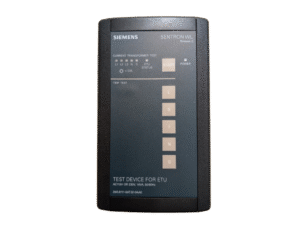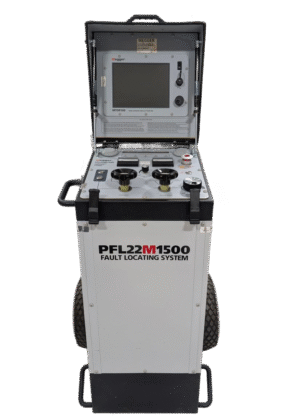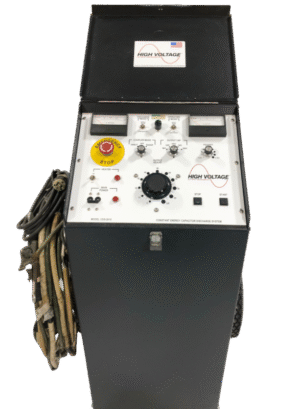The Fault Wizard, while not the latest version, is a handy tool for underground cable fault location.
Here’s a breakdown of its key features:
Portability and Easy Use: Like its successor, the original Fault Wizard is lightweight and battery-powered, making it ideal for fieldwork in remote locations.
Automated Fault Distance: While Fault Wizard 2 offers automatic distance readout, the original model might require some manual interpretation of the displayed data.
Fault Type Identification: It can still identify basic fault types like open or short circuits.
Tech Used: The Fault Wizard primarily relies on Time Domain Reflectometry (TDR) technology. TDR sends a high-voltage pulse down the cable and measures the reflected signal to pinpoint the fault location.
- Variable Impulse Voltage: This allows for adjusting the pulse strength for minimizing cable damage during testing.
- Cycle Mode: This mode helps pinpoint the fault location more precisely using a headset to listen for the reflected pulse.
- Hi-Pot Testing (Optional): Some models might have a Hi-Pot mode that allows for testing the breakdown voltage of the fault in an isolated cable section.
- Technology: While still functional, TDR alone might not be as precise as the combined technologies used in Fault Wizard 2.
- Manual Interpretation: The user might need some experience interpreting the displayed data for accurate fault location.

